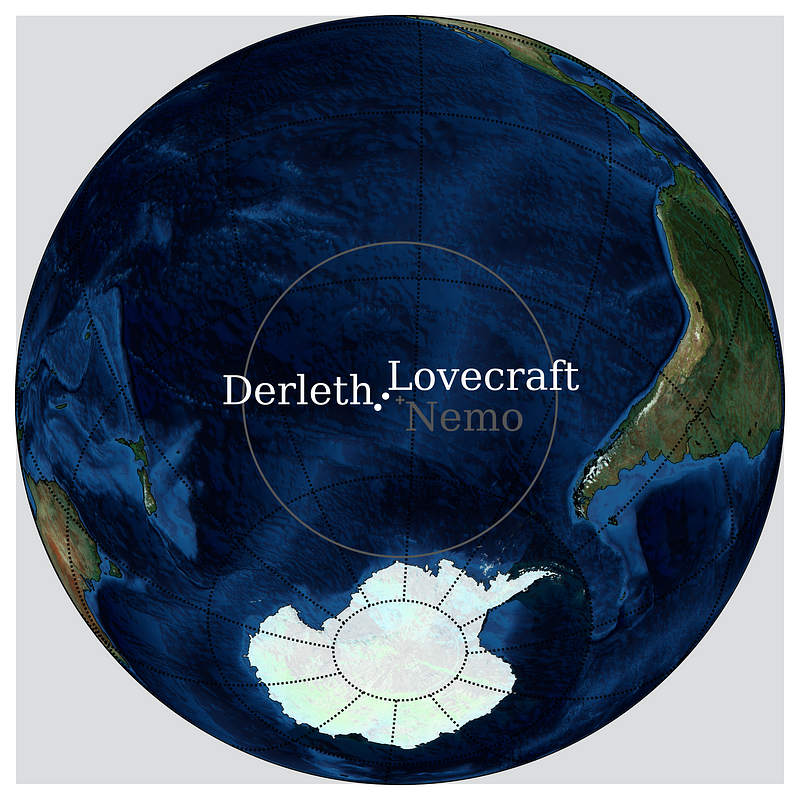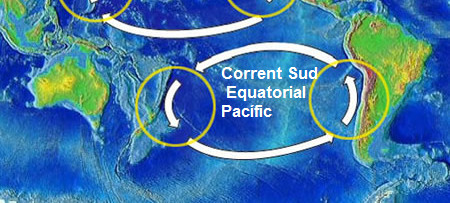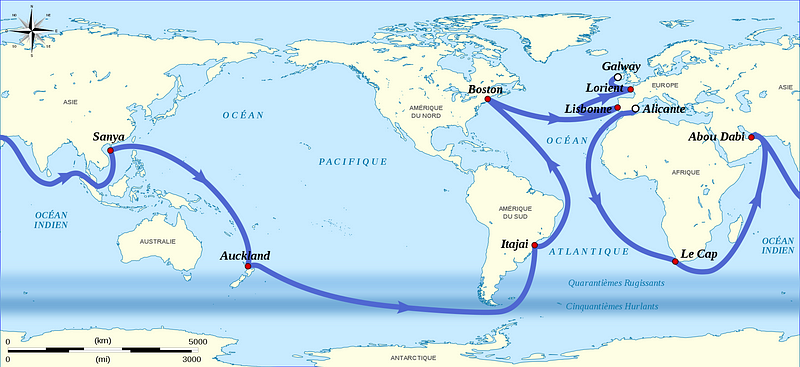 ecently, I wrote about the geographic concept of “Pole of Inaccessibility” and a lonely Lenin bust in Antarctica. While I talked about some of the Continental Points of Inaccessibility, there are also Points of Inaccessibility in the Ocean, most notably Point Nemo
ecently, I wrote about the geographic concept of “Pole of Inaccessibility” and a lonely Lenin bust in Antarctica. While I talked about some of the Continental Points of Inaccessibility, there are also Points of Inaccessibility in the Ocean, most notably Point Nemo
Located in the South Pacific Ocean, Point Nemo is exactly 2,688km (1,670 mi) from the nearest landmasses:
- Pitcairn Islands (British Overseas Territory) to the north
- Easter Islands (special territories of Chile) to the northeast
- Maher Island (off the coast of Marie Byrd Land, Antarctica) to the south
If you sailed there, the closest human beings to you would be the astronauts aboard the International Space Station
Here are some facts about what you could call the literal “middle of nowhere”:
1. The name
Nemo is Latin for “no one.” The name references Jules Verne’s Captain Nemo, the submarine captain from 20,000 Leagues Under the Sea.
Point Nemo is also referenced by H. P. Lovecraft in a short story from 1928, as the location of the ancient city of R’lyeh, home to the tentacle-mouthed, human-dragon Cthulhu. You might recognize it as the monster chasing Rick and Morty in the show’s opening sequence, right before the title card.

2. No humans around
This is one of those perfectly-named places: Point Nemo is so deep into the ocean, that if you actually sailed there, the closest human beings to you would be the astronauts aboard the International Space Station, passing around 416km (258 mi) overhead. The nearest inhabited landmass to Point Nemo is over 2,700km (1,670 mi) away, in the Easter Islands (Chile).
The whole region around Point Nemo is pretty well known among space agencies.
3. Also a cemetery
Due to its remote location, Point Nemo is known as a “spacecraft cemetery.” Far from people and maritime traffic, it’s the perfect crash site for decommissioned satellites, space stations, and other spacecraft re-entering the atmosphere.
The International Space Station (ISS) and the European and Japanese space agencies have long used it as a dumping ground. Its inhabitants include over a hundred spacecraft, with the most well-known being the Russian space station Mir (in orbit from 1986 to 2001), the world’s first space station.
4. Actually, there are barely any living things around
Point Nemo is located inside the South Pacific Gyre, a rotating current that prevents nutrient-rich water from coastal areas from flowing deep into the ocean. Because it’s also so isolated from land, the wind doesn’t carry much organic matter either, making it impossible to sustain any sort of complex life forms here.

This helps minimize the impact of human activity on the environment, as Point Nemo is relatively lifeless.
Or is it…?
5 . The Bloop
In 1997, a mysterious noise was recorded less than 2,000 km (1,240 mi) away from Point Nemo. Because scientists like Steven D’Hondt (oceanographer at the University of Rhode Island) have described it as “the least biologically active region of the world ocean,” this led to a great deal of excitement.
Nicknamed the “Bloop,” the exceptionally loud noise was recorded all across the Pacific, leading to speculation that it was made by some yet-undiscovered creature.
The fact that it occurred so near to the coordinates H. P. Lovecraft set for the ancient city of R’lyeh, home to the monster Cthulhu, (point 1) added fuel to the conspiracy theory “fire.”
Eight years later, in 2005, the United States National Oceanic and Atmospheric Administration (NOAA) announced that “the Bloop” was actually the sound of icebergs cracking and fracturing. According to the NOAA, when icequakes happen, they generate powerful, ultra-low-frequency sounds, similar to the ones that originated “the Bloop”.
6. Finding (Point) Nemo
“How does one find the middle of the ocean?”
In 1992, survey engineer Hrvoje Lukatela used special software that incorporated the planet’s ellipsoid shape for accuracy, determining the location of Point Nemo from his desk.
It’s possible no human has ever passed through the specific coordinates at all.
7. Rare visitors
The only people who even come close to Point Nemo are the participants in the Ocean Race, a yacht race around the world, that happens every three to four years.
The participants cross Point Nemo in the leg between Auckland, New Zealand, and Itajaí, Brazil: 7,600 nautical miles (14073km or 8745mi) through some of the coldest and roughest waters in the world.

The next Ocean Race is scheduled for October 2022.
8. What it looks like
“On a calm day, the sea surface in the heart of the South Pacific Gyre is simply beautiful — clear cornflower blue, with a violet tone — because it contains so little particulate matter and so little living material,” — D’Hondt
When the band Gorillaz released 2010’s Plastic Beach, the album had its own fictional backstory: it had been recorded at a studio built on top of the trash floating in the ocean, near Point Nemo.
Although the engineering of building a studio on a floating garbage patch in the middle of the ocean is a little off, the island of Plastic Beach is real, with the biggest accumulation of plastic being 2500km (1550 mi) north-east of Point Nemo.
This list could have more numbers, but sadly, there is still a lot we don’t know about Point Nemo. Its remoteness makes research expensive and challenging. Its only visitors have been helping scientists gather information by dropping drifter buoys and collecting microplastic data.
The sad reality is our plastic has reached the end of the world, even if we, as a species, only drop by every three to four years. Point Nemo is littered with human trash, both big and small. While Elon Musk is already working on reusable rockets, the plastic around Point Nemo will probably be the last to be removed from the ocean, in the far, far away future.

TV producer, reader, writer, bibliophile, and map lover. Did I mention I also love history?
?? IG: joao.pa.fernandes





